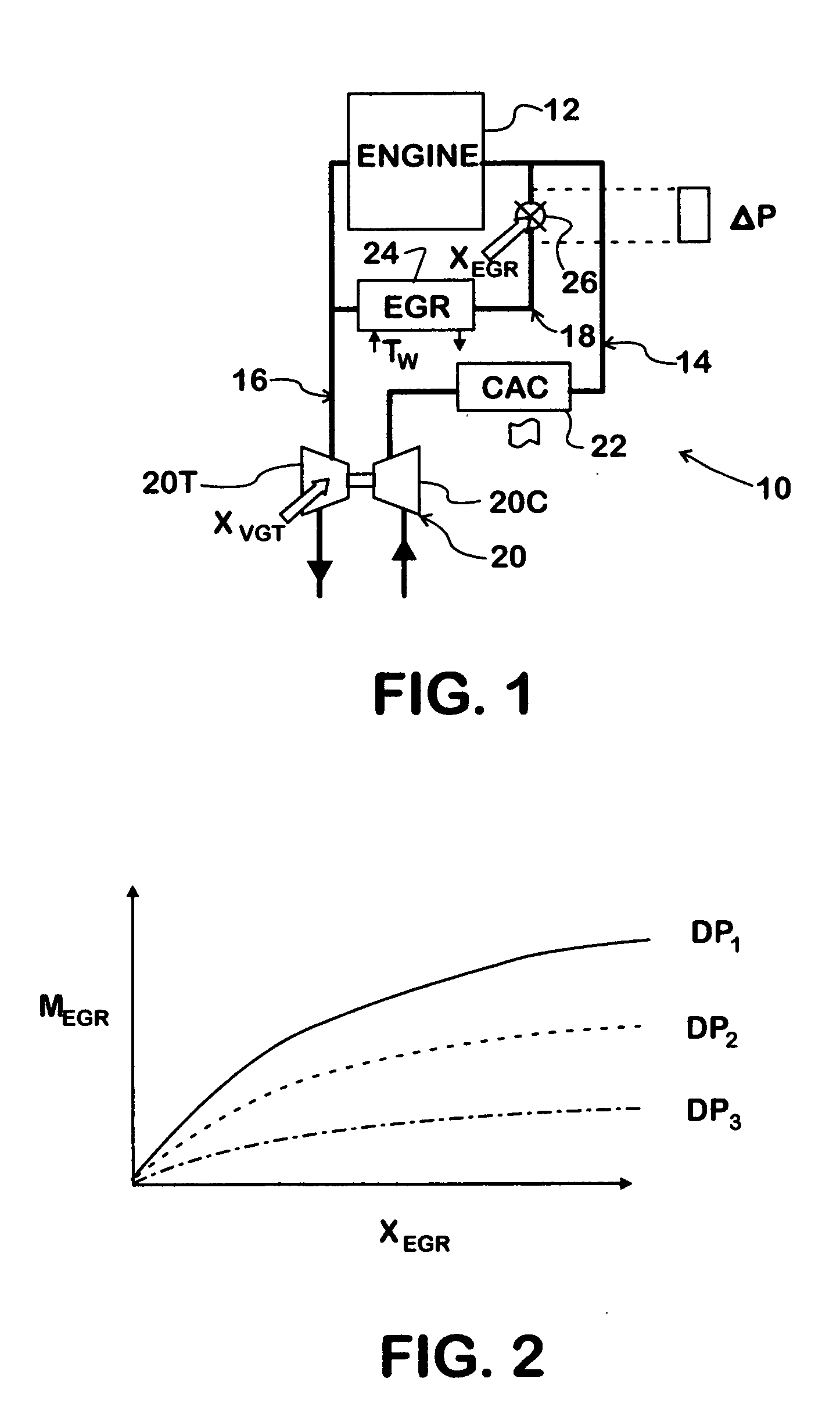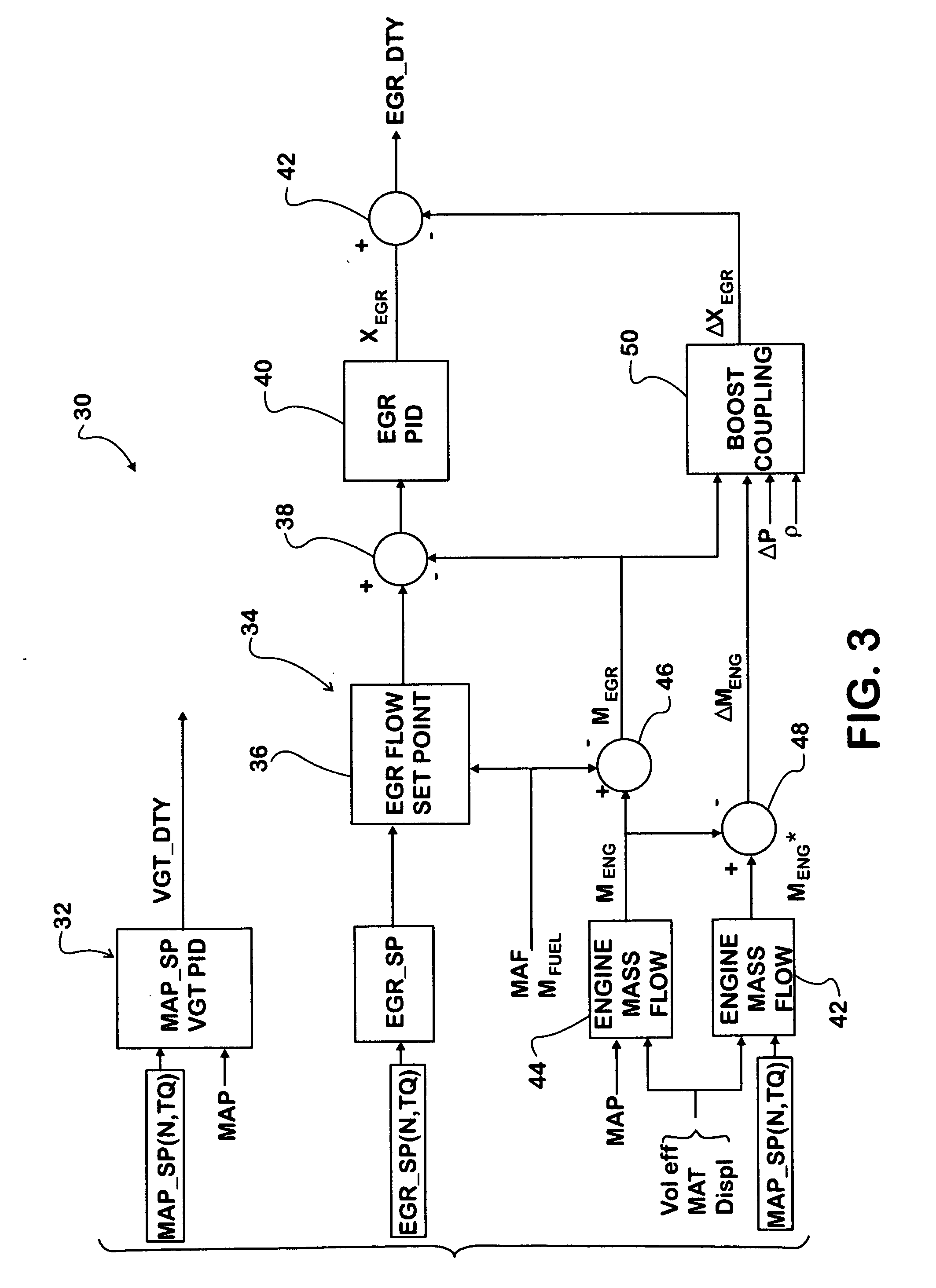Strategy for control of recirculated exhaust gas to null turbocharger boost error
a turbocharger and boost error technology, applied in the direction of electric control, machines/engines, mechanical equipment, etc., can solve the problems of unfavorable engine/vehicle performance, slow response characteristics of mechanical devices controlled by the control system, etc., to reduce nox formation, quick response, and increase the mass flow rate of exhaust gas
- Summary
- Abstract
- Description
- Claims
- Application Information
AI Technical Summary
Benefits of technology
Problems solved by technology
Method used
Image
Examples
Embodiment Construction
[0031]FIG. 1 shows an exemplary internal combustion engine system 10 comprising an engine 12 containing cylinders in which combustion occurs, an intake system 14 through which charge air can enter engine 12 and an exhaust system 16 through which exhaust gasses resulting from combustion of air-fuel mixtures in the cylinders exit. An EGR system 18 provides for exhaust gas to be recirculated from exhaust system 16 to intake system 14.
[0032]Engine system 10 is representative of a turbocharged diesel engine comprising a turbocharger 20 that has turbine 20T in exhaust system 16 operating a compressor 20C in intake system 14. A charge air cooler 22 is downstream of compressor 20C.
[0033]EGR system 18 comprises an EGR cooler 26 through which exhaust gas passes before reaching an EGR valve 26 that is controlled by a duty-cycle signal applied to an electric actuator of the valve to set the extent to which the EGR valve is open.
[0034]The inventive strategy is embodied in one or more processors ...
PUM
 Login to View More
Login to View More Abstract
Description
Claims
Application Information
 Login to View More
Login to View More - R&D
- Intellectual Property
- Life Sciences
- Materials
- Tech Scout
- Unparalleled Data Quality
- Higher Quality Content
- 60% Fewer Hallucinations
Browse by: Latest US Patents, China's latest patents, Technical Efficacy Thesaurus, Application Domain, Technology Topic, Popular Technical Reports.
© 2025 PatSnap. All rights reserved.Legal|Privacy policy|Modern Slavery Act Transparency Statement|Sitemap|About US| Contact US: help@patsnap.com



